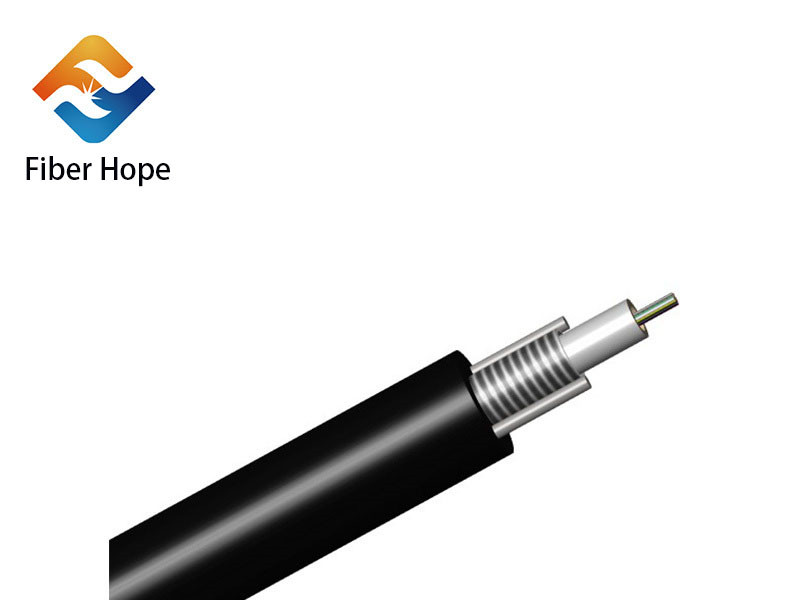Fiber Hope Optical Communication Tech Co.,Ltd.
E-mail:kevin@fh-fiber.com
Fiber Hope optical fiber communication expert & fiber optic cable manufacturer
E-mail:kevin@fh-fiber.com
Fiber Hope optical fiber communication expert & fiber optic cable manufacturer
1. Optical cable routing line length
Due to the physical characteristics of the optical cable itself and the inhomogeneity in the production process, the optical signal propagating in it is being diffused and absorbed all the time. When the optical cable link is too long, the overall attenuation of the optical signal of the entire link will exceed the requirements of network planning, and the optical signal attenuation is too large, which will reduce the communication effect.
2. The bending angle of the optical cable is too large
The cable bending attenuation and pressure attenuation are essentially caused by the failure of total reflection in the optical transmission process due to the deformation of the optical cable. The optical fiber has a certain degree of bendability, but when the optical fiber is bent to a certain angle, it will cause a change in the propagation direction of the optical signal in the optical cable, resulting in bending attenuation. This requires special attention to reserve sufficient angles for wiring during wiring construction.
3. The optical cable is compressed or broken
This is the most common fault in optical cable faults. The optical fiber is subject to external forces or natural disasters, resulting in tiny irregular bends or even breakage. When the breakage occurs inside the splice box or optical cable, the breakpoint cannot be found from the outside. However, the refractive index will change at the break point of the fiber, and even reflection loss will be formed, which will deteriorate the quality of the fiber transmission signal. At this time, use the OTDR optical cable tester to detect the reflection peak to find the bending attenuation or break point inside the optical fiber.
4. Fusion splicing failure of optical fiber joint construction
During the laying of optical cables, an optical fiber fusion splicer is often used to fuse two sections of optical fibers into one. Since the glass fiber in the core layer of the optical cable is fused, the fusion splicer needs to be used correctly according to the type of optical cable during the welding process on the construction site. Due to the operation not conforming to the construction specification and the change of the construction environment, the optical fiber is easily contaminated. Dirt, which leads to the mixing of impurities during the welding process, resulting in a decrease in the communication quality of the entire link.
5. Fiber core diameters are different
Optical fiber laying often uses a variety of active connection laying methods, such as flange connections, which are often used in computer network laying in buildings. Active connection generally has low loss, but when the end face of the optical fiber or the flange is not clean, the diameter of the core fiber is different, and the joint is not strict, the loss of the joint will be greatly increased. Testing by OTDR or double-ended power can find core diameter mismatch faults. It should be noted that, except for the diameter of the core fiber, the transmission mode, wavelength and attenuation mode of light are completely different between single-mode fiber and multimode fiber, so they cannot be used together.

6. Fiber optic connector pollution
Pollution of pigtail connectors and dampness of jumper fibers are the main causes of cable failures. Especially in the indoor network there are a lot of short fibers, and various network switching devices, the plugging and unplugging of optical fiber connectors, the replacement and transfer of flanges are very frequent. During the operation, excessive dust, insertion loss, finger touch, etc. can easily make the fiber optic connector dirty, making the optical path impossible to adjust or the optical attenuation is too large. Alcohol wipes should be used for cleaning.
7. Poor polishing of joints
Poor connector polishing is also one of the main failures of fiber optic links. The ideal optical fiber cutting plane does not exist in the real physical environment, and there are some undulations or slopes. When the light in the optical cable link encounters such a cut surface, the diffuse scattering and reflection of light due to the irregular joint surface will greatly increase the attenuation of light. On the curve of the OTDR tester, the attenuation area of the poorly polished cut surface is much larger than that of the normal end surface.
Fiber hope fiber optic cable and patch cord manufacturers can provide high-quality fiber optic cables,
fiber pigtails, fiber patch cords, single-mode multi-mode fiber, welcome to inquiry!
copyright©2025 FIBER HOPE OPTICAL COMMUNICATION TECH CO。,LTD。| All Rights Reserved
Hello, please leave your name and email here before chat online so that we won't miss your message and contact you smoothly.